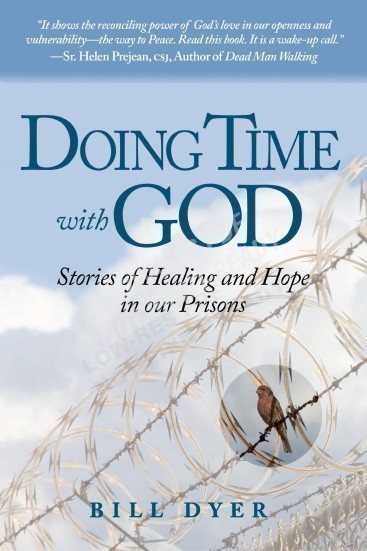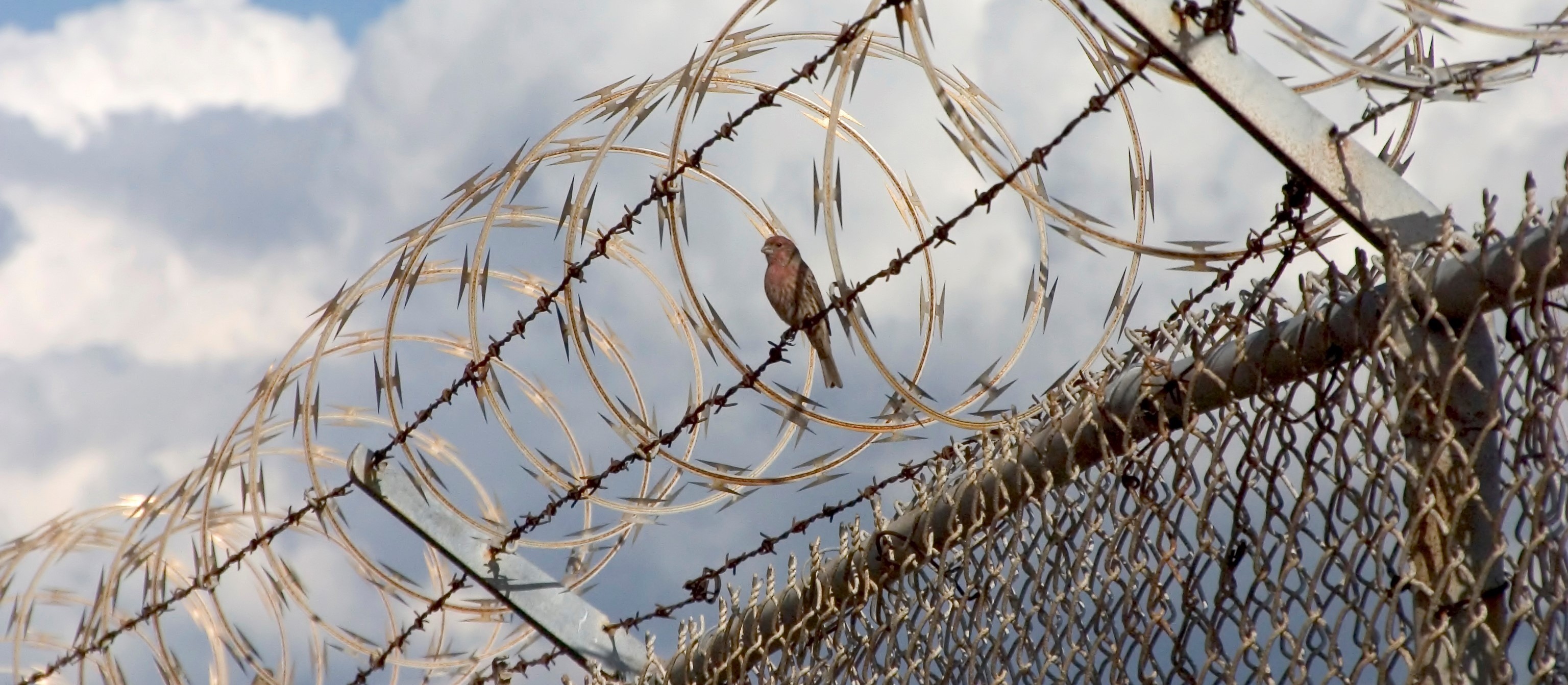Books About Restorative Justice
"A beautiful testimony of how our shared-life in God is renewed through story. It shows the reconciling power of God's love in our openness and vulnerability - the way to Peace. If you want to see who we are created to be for one another, read this book. It is a wake-up call."
Sr. Helen Prejean
Author of DEAD MAN WALKING
1. Doing Time With God - Bill Dyer
One of the best books on restorative justice, this is based on the author's experience being shot at an ATM on his way to work. It reveals the kinds of extraordinary things that happen when Dyer and other crime victims share their stories with offenders. This one-of-a-kind book places you in the midst of conversations in a such a way that you see yourself in the stories and reflect on your life. Discussion questions can be applied to each chapter to support your journey.
Restorative justice isn’t some new concept or idea. If anything, it’s one of the most common forms of justice having served us for centuries. Widely known for being less punitive compared to the other forms of justice, restorative justice is mostly concerned about helping criminals amend their crimes instead of taking a strictly punitive approach without making rehabilitation a part of the process.
It’s essentially a form of system that views crime as a cause of harm and NOT a break of rules. By incarcerating criminals, what the current criminal justice system does is tackling crime indirectly and incompletely, an approach that always proves to be ineffective in the end.
The following is a list of books about restorative justice that give great insight into the field of restorative justice in many different ways.
Books About Restorative Justice
2. Little Book of Circle Processes by Kay Pranis
One of the best books on restorative justice, this one takes a look into some of the common forms of conflict resolution. Started with our ancestors sitting around a fire in some sort of circle, and families gathering around a table to talk things out, and communities gathering in a circle to solve some of their problems.
The book draws its inspiration from the Native American tradition where peace and healing was achieved through talking. The book goes on to prove how peacemaking circles aren’t completely phased out, and how neighborhoods are still using it to offer heartfelt supports to various victims of crimes.
3. Conflict is NOT Abuse by Sarah Schulman
Another listing in the category of top restorative justice books, is Sarah Schulman's book that takes us through the continuum between intimate relationships and politics. She also takes a deeper dive into the inflated accusations of harm and how they deter one from embracing accountability.
That is followed by her trying to shed some light on the distinguishing features between abuse and conflict, while directly addressing the contemporary culture of blame shifting.
4. The Restorative Practices Handbook For Teachers, Disciplinarians, And Administrators by Bob Costello, Ted Wachtel, and Joshua Wachtel
Specifically written for educators looking to implement restorative practices, this books serves as a practical guide for proactively building positive school communities while primarily focusing on reducing suspensions, discipline referrals, and expulsions.
Also covered in what is considered by some to be one of the most thorough books about restorative justice, is the spectrum of restorative justice techniques, together with implementation guidelines, and the explanations surrounding each one of them.
5. Accountability in Restorative Justice by Declan Roche
Many countries are now embracing Restorative justice, with some establishing different programs around it with the aim of raising awareness and figuring the best way possible on how to make it workable. A good number of the people who attend those meeting do it in the hopes of achieving the ideals of reconciliation, reparation and reintegration.
Like some other books about restorative justice, this one tries to draw holes into some of the concerns people raise that such meetings often degenerate into kangaroo courts, where those involved end up bullying or humiliating each other.
6. Just Schools by Belinda Hopkins
Just Schools walks you through a dynamic approach of tackling conflicts in schools, which goes on to ensure that you’re able to foster understanding and healing in place where the justice systems assign blame and dispense punishment.
One of the better restorative justice books, this one aims to create ethics of care and justice, which helps to make the school environment both safer and happier. The book stretches beyond reducing conflicts, by helping students work on their citizen skills, open communication, team work, and self-esteem among others.
Books About Restorative Justice
7. Little Book of Family Group Conferences New Zealand Style by Allan MacRae
This book offers some invaluable insights on how to deal with juvenile crimes and other child welfare issues. The third installment of the book focuses on juvenile justice system built around some of these conferences.
Not all books on restorative justice have been adopted in regions all over the world like this one has been. It applies to a broad range of areas including school discipline, child welfare, and criminal justice for both adults and juveniles (making it a must if you are interested in restorative justice in prisons books.
8. The Little Book of Victim Offender Conferencing by Lorraine S.
Restorative Justice is for the most part about victim-offender dialogues. It’s basically about holding offenders accountable for the harm they’ve cause while giving the victims a voice on how to repair the harm caused by crime (as much as possible).
Considered by many to be one of the best books on restorative justice, the little book focuses on the importance of relationship and the connection it has with crime. In the event of a crime, the relationship takes a sour turn and the books offers some solid pointers on how to make it right.
Check Out More Of The Books About Restorative Justice

Doing Time With God Is One Of Those Books On Restorative Justice That Opens The Heart, Touches The Soul, And Renews The Mind
While reading this book, you may experience these things happening in yourself. Discussion questions and an afterword by the author invite you to reflect on your own journey, discover new meaning, and expand this movement of Peace in your life.
Why Is Doing Time With God One Of The Best Books About Restorative Justice?
One of the crucial factors a book should have in order to begin and/or enhance the healing process for crime victims who read it, is for the message to touch and move readers to experience healing while reading the book. This is a reported experience for many people who have read Doing Time With God.
What makes this happen in Doing Time With God are the healing stories which apply to all human beings, and are therefore easy for readers to see themselves in.
Doing Time With God is one of the most gripping books about restorative justice; it contains dramatic interactions that expand awareness for the reader - not only with regard to restorative justice, but also in the context of one's personal life and relationships.
One of the most unique elements of Doing Time With God is seeing how victims and offenders are transformed through open and honest conversation with each other. This is significant because many people begin to see new uplifting possibilities for their own lives and relationships.
Doing Time With God is one of the best books about restorative justice that shows how willing people are often one conversation away from having a breakthrough into a new awareness that changes everything and furthers their journey of healing and restoring peace.
"As I read this book I felt the Holy Spirit in it and in me. I cried, I laughed, and I let God change me. The book is honest, upfront, REAL, and filled with God’s love."
Doing Time With God Is One Of The Top Books About Restorative Because It Provides An Opportunity For The Reader To Experience The Kind Of Healing Dialogue That Takes Place Between Victims Of Violence and Offenders in a prison setting.


